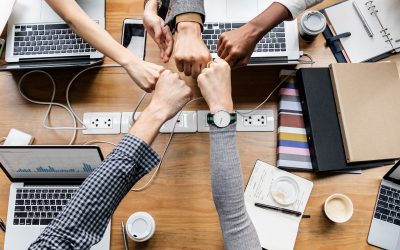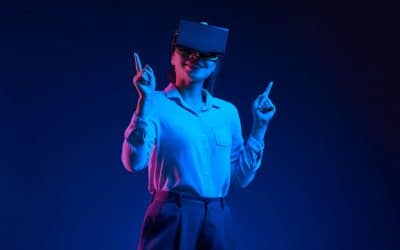- neuromuscular mechanism: especially indirect type of fascial techniques may unload muscle spindles while loading Golgi tendon organs (Van Buskirk, 2006). This may result in a modulation of muscle tone and of related fascial tension, which in turn may quiet the nociceptors and the correspondent facilitated spinal level (Kakigi and Watanabe, 1996), with a consequent modulation of ANS activity on blood and lymphatic flow;
- structural change: evidence suggests that the structure of the collagen matrix can be changed by manual therapy (Pohl, 2010). In people with chronic LBP, myofascial release of the thoracolumbar fascia has shown a scanned increase of its thickness, with the persistence of such changes for at least 24 hrs (Blanquet et al, 2010). However, a 3D mathematical model for fascial deformation has excluded that palpable sensations of tissue release following manual therapy may be due to plastic deformations of firm type of fascia, as fascia lata and plantar fascia, whereas this may be possible in thin and more elastic fasciae such as the nasal one (Chaudhry et al, 2008);
- viscoelastic change: the increase in sliding of the fascial layers, together with a decrease in pain following manual fascial work may be due to a transformation of the ground substance from its densified to a more fluid state (Findley, 2009). This would enhance the production of hyaluronic acid, together with the interfacial flow of various inflammatory mediators (Schultz and Feltis, 1996). Consequent modulation of ANS and primary afferent fibers activity may occur, possibly leading to a reset of aberrant reflexes underlying somatic dysfunction (Lund et al, 2002);
- fluid change: fascial work may increase the interplay of unbound water oscillations and calcium ion concentration while promoting interstitial fluid flow and bringing oxygenation and nutrients in tissues up to a normal concentration (Lee, 2008). This may in turn stimulate fibroblast proliferation and collagen production/alignment (Hinz et al, 2004);
- cellular response: manual loading of the fascia may cause changes through activation of fibroblasts response and different receptors present in the fascial tissue, leading to corrections of fascial hypertonicity and/or abnormal tissue collagen crosslinking (Khan and Scott, 2009). Note that fibroblast is highly responsive to direction, frequency, and duration of a therapeutic load, differentially regulating fibroblast and myofibroblast activity, ion conductances, and gene expression that may all come into play in the clinical efficacy of fascial treatment (Eagan et al, 2007). The finally therapeutic load may stimulate connective tissue repair and remodeling (Kjaer et al, 2009);
- chemical change: via an anandamide effect, fascial work may influence the endocannabinoid system – an endorphin-like system constituted of cell membrane receptors and endogenous ligands (McPartland et al, 2005). This system affects fibroblast remodeling, reduces nociception and inflammation in myofascial tissues, together with provoking cardiovascular changes, smooth muscle relaxation, and possible mood changes through its influence on the central nervous system (Ralevic et al, 2002). Fascial work may also produce the enhancement of cytokine pools from active fascial fibroblasts (Willard et al, 2010). In turn, cytokines may reduce edema, pain, fibrotic materials, even at sites distant from where the manual treatment is applied;
- autonomic mechanism: therapeutic touch may produce stimulation of pressure-sensitive mechanoreceptors in the fascia, followed by a parasympathetic response (Schleip, 2003). Under the parasympathetic influence, a change in local vasodilatation and tissue viscosity, together with a lowered tonus of intraracial smooth muscle cells may occur. Finally, in response to the proprioceptive input, the central nervous system may change muscle tone, allowing the therapist to follow myofascial paths of least resistance up to when release is gained. Fascial work may also produce modulation of hyperempathetic activity (Rivers et al, 2008) or upregulation of parasympathetic (Queré et al, 2009) normalizing various hemodynamic functions;
- epigenetic factors: mechanical signals, including therapeutic load, seem to be crucial regulators of cell behavior and tissue differentiation by affecting gene regulation at the epigenetic level, therefore producing a heritable reduction of DNA methylation (Arnsdorf et al, 2010). This process may regulate extracellular matrix composition and fibroblast activity involved in tissue repair and function (Bavan et al, 2011);
- other influences: most of the osteopathic fascial techniques require respiratory cooperation by the patient that seems to play a role in myofascial relaxation (Cummings and Howell, 1990), even in non-respiratory muscles (Kisselkova, 1976). In addition, oscillation and vibration are usually integrated during the application of many fascial techniques. It has been demonstrated that manual low-frequency oscillations can induce muscle relaxation, provoking a significant change in motoneuron excitability and an inhibitory effect on vestibular nuclei, inducing a psychogenic relaxation (Newham and Lederman, 1997). Oscillations may also promote inter-compartmental fluid flow through hydraulic mechanisms (Lederman, 1997), which may have a possible modulating effect on spinal excitability and the pain gate mechanisms in the CNS (Coghill et al, 1994.). Finally, vibration has been demonstrated to be a critical epigenetic factor in regulating the microenvironment of the extracellular matrix, thus providing a basis for reducing tissue adhesions and improving function. (Kutty and Webb, 2010)

In other words
To conclude, it seems evident that various factors may interplay with myofascial function and its ability to respond to treatment. However, the connective tissue may serve as a trait uniting all these elements, potentially sustaining an integrated understanding of the whole picture: ‘Since connective tissue plays an intimate role in the function of all other tissues, a complex connective tissue network system integrating whole-body mechanical forces may coherently influence the function of all other physiological systems. Demonstrating the existence of such a “meta-system” would therefore change our core understanding of physiology’ (Langevin, 2006).
References
- Arnsdorf, EJ, et al, Nov 2010. The epigenetic mechanism of mechanically induced osteogenic differentiation. J Biomech 16;43(15):2881-6. Epub 2010 Aug 21
- Bavan, L, et al, Feb 2011. MicroRNA epigenetics: a new avenue for wound healing research. BioDrugs. 1;25(1):27-41
- Blanquet, M., et al., 2010. Ultrasound study of the thoracolumbar fascia and surrounding tissues in chronic low back pain before and after spinal manipulative therapy. In: 7th Interdisciplinary world congress on low back and pelvic pain, Nov 9e12, LA
Bove, GM, Jul 2008. Epi-perineurial anatomy, innervation, and axonal nociceptive mechanisms. J. Bodyw Mov Ther. 12 (3), 185e190. Epub 2008 May 21. Review
- Chaudhry, H, et al, Aug 2008. Three-dimensional mathematical model for deformation of human fasciae in manual therapy. J. Am. Osteopath Assoc. 108 (8), 379e390
- Chila, AG, 2006. Connective tissue continuity: membranous and ligamentous articular dysfunction, Athens, OH: Ohio Univ College of Ost. Med
- Coghill, R., et al, 1994. Distributed processing of pain and vibration by the human brain. Journal of Neuroscience 14, 4095e4108
- Cortelli, P., et al, May 2013. Nociception and autonomic nervous system. Neurol Sci. 34 Suppl 1:S41-6
- Cummings, J., Howell, J., 1990. The role of respiration in the tension production of myofascial tissues. JAOA 90 (9), 842
- Cummings, GS, Tillman, LJ, 1992. Remodeling of dense connective tissue in normal adult tissues. In: Currier, DP, Nelson, RM, Dynamics of Human Biologic Tissues Contemporary Perspectives in Rehabilitation, V. 8. Davis FA, Phi, pp. 45e73
- Eagan, T.S., et al, 2007. Importance of strain direction in regulating human fibroblast proliferation and cytokine secretion: a useful in vitro model for soft tissue injury and manual medicine treatments (Oct). J. Manip. Phys. Ther. 30(8), 584e592
- Educational Council on Osteopathic Principles (E.C.O.P.), 2006. Glossary of Osteopathic Terminology Usage Guide. Chevy Chase, Maryland: AACOM
- Eisenhart, A.W., et al, 2003. Osteopathic manipulative treatment in the emergency dept for patients with acute ankle injuries. JAOA 103, 417e421
- Findley, TW, Jun 2009. Second international fascia research congress. Int J Ther Massage Bodywork. 29;2(2):1-6
- Frymann, V, 1998. The collected papers of Viola M. Frymann, DO. Legacy of Osteopathy to children. Indianapolis, Indiana: American Academy of Osteopathy
- Fulford, RC, Stone, G, 1997. Dr. Fulford’s Touch of Life: The healing power of the natural life force. NY: Pocket Books
- Greenman, P, 1989. Principles of Manual Medicine. Williams and Wilkins, Baltimore, MD
Hazzard, C, 1905. The Practice and Applied Therapeutics of Osteopathy. Ch 11-19-20
- Hinz, B, et al, 2004. Myofibroblast development is characterized by specific cell-cell adherens junctions. Mol. Biol. Cell 15 (9), 4310e4320
- Johnson, S., Kurtz, M., 2003. Osteopathic manipulative treatment techniques preferred by contemporary osteopathic physicians. J. Am. Osteopath Assoc. 103 (5), 219e224
- Kakigi, R, Watanabe, S, 1996. Pain relief by various kinds of interference stimulation applied to the peripheral skin in humans: pain-related brain potentials following CO2 laser stimulation. J. of the Peripheral Nervous System 1, 189e198
- Khan, KM, Scott, A, 2009. Mechanotherapy. British J Sports Medicine 43:247–251
- Kjaer, M, et al., 2009. From mechanical loading to collagen synthesis. Scand J Med Sci Sports 19(4):500-510
- Kisselkova, G., 1976. Appl. Physiol. 46, 1093e1095
- Kutty, J.K., Webb, K., Jan 2010. Vibration stimulates vocal mucosa-like matrix expression by hydrogel-encapsulated fibroblasts. J Tissue Eng Regen Med. 4(1):62-72
- Langevin, H.M., 2006. Connective tissue: a body-wide signaling network? Med Hypotheses 66(6):1074-7. Epub 2006 Feb 17
Langevin, HM, et al, Dec 2009. Ultrasound evidence of altered lumbar connective tissue structure in human subjects with chronic low back pain. BMC Musculoskelet. Disord. 3 (10), 151
- Lederman, E., 1997. Fundamentals of Manual Therapy. Churchill Livingstone, London
- Lee, PR, Apr 2006. Still’s concept of connective tissue: lost in “translation”? JAOA. 106(4):176-763 (2), 195e197
- Lee, RP, 2008. The living matrix: a model for the primary respiratory mechanism. Explore (NY) Nov-Dec; 4(6):374-8
- Levine, JD, et al, Jun 1993. Peptides and the primary afferent nociceptor. J. Neurosci. 13 (6), 2273e2286. Review
- Lum, L., 1987. Hyperventilation syndromes in medicine and psychiatry. J. Royal Soc. Med., 229e231
- Lund, I, et al, 2002. Repeated massage-like stimulation induces long-term effects on nociception: contribution of oxytocinergic mechanisms. Eur. J. Neurosci. 16, 330e338
- Martin, R.B., Jan 2004. Osteopathic approach to sexual dysfunction: holistic care to improve patient satisfaction and prevent mortality and morbidity. J. Am. Osteopath Assoc. 104 (1 Suppl.1), S1eS8
- McPartland, JM, et al, Jun 2005. Cannabimimetic effects of osteopathic manipulative treatment. J. Am. Osteopath Assoc. 105 (6), 283e291
- Melrose, J., Ghosh, P., 1988. The non-collagenous proteins of the inter vertebral disc. In: Ghosh, P. (Ed.), The Biology of the Intervertebral Disc, Vol. 1. CRC Press, Boca Raton, pp. 189e237. Ch. 8.
- Nakao, K., et al., 1997. Hyperventilation as a specific test for diagnosis of coronary artery spasm. Am. J. Cardiol. 80 (5), 545e549
- Newham, D.J., Lederman, E., Aug 1997. Effect of manual therapy techniques on the stretch reflex in normal human quadriceps. Disabil.Rehab. 19 (8), 326e331
- O’Connell, J, 2000. Bioelectric fascial activation and release, the physician’s guide to hunting with Dr. Still. Indianapolis. IN: American Academy of Osteopathy, 61
- O’Connell, JA, 2010. Myofascial Release Approach. In: Chila, AG. Foundations of osteopathic medicine. Philadelphia, Lippincott W&Wi; Ch47
- Ohshima, H., Urban, J.P., Sep 1992. The effect of lactate and pH on proteoglycan and protein synthesis rates in the intervertebral disc. Spine (Phila Pa. 1976) 17 (9), 1079e1082
- Ospelt, C, et al, Jul 2011. Inflammatory memories: is epigenetics the missing link to persistent stromal cell activation in rheumatoid arthritis? Autoimmun Rev.10(9):519-24. Epub 2011 Apr 9
- Panjabi, MM, May 2006. A hypothesis of chronic back pain: ligament subfailure injuries lead to muscle control dysfunction.Eur. Spine J. 15 (5), 668e676. Epub 2005 Jul 27. Review
- Pohl, H, Jan 2010. Changes in the structure of collagen distribution in the skin caused by a manual technique. J. Bodyw Mov Ther. 14 (1), 27e34
- Quere´, N., et al., 2009 Jul. Fasciatherapy combined with pulsology touch induces changes in blood turbulence potentially beneficial for vascular endothelium. J. Bodyw Mov Ther. 13 (3), 239e245. Epub 2008 Aug 12
- Ralevic, V, et al., 2002. Cannabinoid modulation of sensory neurotransmission via cannabinoid and vanilloid receptors: Roles in regulation of cardiovascular function. Life Sciences 71, 2577e2594
- Rivers, WE, et al, 2008. Short-term hematologic and hemodynamic effects of osteopathic lymphatic techniques: a pilot crossover trial. JAOA Nov 108, 646e651
- Roberts, W.J., Kramis, R.C., 1990. Sympathetic nervous system influence on acute and chronic pain. In: Fields, H.L. (Ed.), Pain Syndromes in Neurology. Butterworth Heineman, Oxford, pp. 85e106
- Sasaki, N, Odajima, S, 1996. Elongation mechanism of collagen fibrils and force-strain relations of tendon at each level of structural hierarchy. J. Biomech. 29, 1131e1136
- Schleip, R., 2003. Fascial plasticity: a new neurobiological explanation. Part 2. J Bodyw Mov Ther 7:104–116
- Schleip, R., et al, 2005. Active fascial contractility: fascia may be able to contract in a smooth muscle-like manner and thereby influence musculoskeletal dynamics. Med. Hypotheses 65 (2), 273e277
- Schleip, R., et al., Jan 2012. Strain hardening of fascia: static stretching of dense fibrous connective tissues can induce a temporary stiffness increase accompanied by enhanced matrix hydration. J. Bodyw Mov Ther. 16(1), 94e100. Epub 2011 Dec 5.
- Schultz, RL, Feltis, R, 1996. The Endless Web: Fascial Anatomy and Physical Reality.North Atlantic Books Berkeley,CA
- Staubesand, J, Li, Y, 1996. Zum Feinbau der fascia cruris mit besonderer Berucksichtigung epi-und intrafaszialer nerven. Manuelle Medizin 34, 196e200
- Stiles, E., 1976. Osteopathic manipulation in a hospital environment. JAOA 76, 243e258
- Still, AT, 1899A. Philosophy of Osteopathy. Kirksville, MO: A.T. Still; p. 23 / 162 / 164
- Still, AT, 1899B. Philosophy of Osteopathy. Kirksville, MO: A.T. Still; Ch. 9
- Sutherland, WG, 1998. Contributions of thought. In: The Sutherland cranial teaching foundation. Sutherland, AS and Wales, AL, eds, Portland, OR: Ruda Press
- Swartz, M.A., et al., 2001. Mechanical stress is communicated between different cell types to elicit matrix remodeling. Proc Natl Acad Sci USA May 22;98(11):6180-5. Epub 2001 May 15
- Tozzi, P., 2012, Selected fascial aspects of osteopathic practice. J Bodyw Mov Ther. Oct;16(4):503-19. Epub 2012 Feb 26
- Van Buskirk, R.L., 1990. Nociceptive reflexes and the somatic dysfunction: a model. JAOA 90, 792e794. 797e809
- Van Buskirk, RL, 2006. The Still Technique Manual, second ed. The American Academy of Osteopathy, Indianapolis, IN
- Vick, DA, et al, 1996. The safety of manipulative treatment: review of the literature from 1925 to 1993. J Am Osteopath Assoc. 96:113 -115
- Ward, RC, 2003. Foundations for osteopathic medicine. 2nd ed, Philadelphia, Lippincott Williams & Wilkins; p. 931-65
- Willard, FH, et al, 2010. The fascial system of the body. In: Chila, A, 2010. Foundations of Osteopathic Medicine, third ed. Lippincott Williams & Wilkins. Ch 7
- Yahia, L, et al, 1992. Sensory innervation of human thoracolumbar fascia. An immunohistochemical study. Acta Orthop. Scand. 63 (2), 195e197
- Zink, JG, Lawson, WB, May 1979. An osteopathic structural examination and functional interpretation of the soma. Osteopath Ann 7:12 -19




